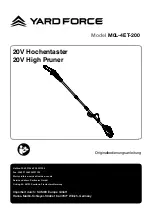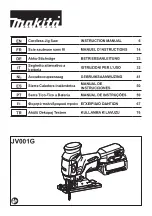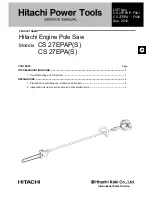
4
6528-51
E
English
Maintenance
Cleaning
Clean dust and debris from vents. Keep the
tool handles clean, dry and free of oil or
grease. Use only mild soap and a damp cloth
to clean your tool since certain cleaning
agents and solvents are harmful to plastics
and other insulated parts.
Repairs
Use only identical
MILWAUKEE replacement
parts. Always take the tool to an authorized
MILWAUKEE service center for repairs and
maintenance.
To reduce the risk of explosion, electric
shock and property damage, always check
the work area for hidden electrical wires or
pipes when making blind or plunge cuts.
NOTE: To make plunge cutting easier, use a
heavy gauge blade and install the blade with
the teeth facing upward as shown in (E)
Column B. To make the plunge cut easier,
slowly pull the tool back at the beginning of
the plunge cut.
WARNING!
Plunge Cutting
Your
MILWAUKEE Sawzall
®
is ideal for plunge
cutting directly into surfaces that can not be
cut from an edge, such as walls or floors.
Plunge cutting may be done two ways de-
pending on how the blade is inserted. (E)
Column A shows how to plunge cut with the
teeth of the blade facing downward. (E)
Column B shows how to plunge cut with the
teeth of the blade facing upward. Do not
plunge cut into metal surfaces (see “Cutting
Metals”).
1.
Insert the blade into the tool.
If you inserted the blade with the teeth
facing downward, hold the tool as shown
in (E) Column A, resting the edge of the
shoe on the workpiece as shown.
2.
With the blade just above the workpiece,
pull the trigger. Using the edge of the
shoe as a pivot, lower the blade into the
workpiece as shown.
3.
As the blade starts cutting, raise the
handle of the tool slowly until the shoe
rests firmly on the workpiece. Then
guide the tool along your cutting line to
acquire the desired cut.
Summary of Contents for 6528-51
Page 1: ...SSE 1000 QX ...







































